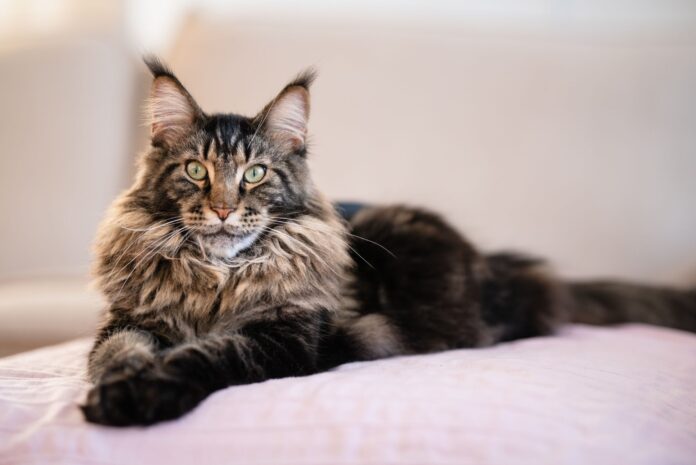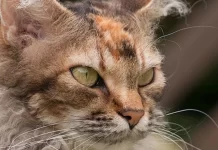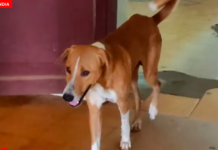Last Updated on September 20, 2023 by Fumipets
11 Cat Breeds That Act Like Dogs
Some cat breeds exhibit dog-like behaviors and characteristics, making them unique and appealing to individuals who desire a feline companion with certain canine traits.
These “cat breeds that act like dogs” are known for their sociability, loyalty, and playfulness, often forming strong bonds with their human families. While cats are naturally independent animals, these breeds tend to display behaviors such as following their owners around, enjoying interactive play, and even responding to training commands.
Cat Breeds That Act Like Dogs
There are many cats who behave like dogs, despite the common perception that cats are aloof and independent. These cats are likely to follow you around the home and are as quick to pick up tricks as dogs. Many people take pleasure in leash-free walking and canine-like antics. Moreover, they could meow for attention and follow their owners around.
Some cat breeds are more likely than others to exhibit these traits. While socialization and personalities might vary, genetics account for a large portion of behavior. Every cat is unique, with some behaving more like dogs than others.
Interestingly, there are several cat breeds other than the traditional cat that behave more like dogs. We’ll examine some of the most popular canine species that behave like cats.
The 11 Cat Breeds That Act Like Dogs:
1. Abyssinian Cat

Size: 8-12 pounds
Lifespan: 12-15 years
Temperament: Active and curious
A separate cat breed with a spotted tabby coat is the Abyssinian. The cat’s name comes from Abyssinia, also known as Ethiopia, where this breed originated. As Abyssinian cats were discovered mummified in Egyptian tombs, this breed is most likely quite old. Due to their ancestry, they are one of the most popular breeds in the world. They’ve got plenty of time to increase their population!
While not always as slender as a Siamese, they are often long and lean. They are often characterized as energetic and inquisitive, which also suggests that they want to be involved in activities. They often are compared to dogs since they like running around and playing. They will even practice tricks and play fetch. They are not hesitant about how much they love and need their friends and family.
These cats form strong bonds with their owners and will follow them around the home. They like interacting with others and get along with most people, even kids.
They are vulnerable to a number of illnesses, including gingivitis. They are also susceptible to a kidney-related genetic abnormality. Individuals might have issues with retinal degeneration, which is also inherited. Breeders have made a lot of effort to lessen the frequency of these genetic issues, however.
2. Ragdoll Cat
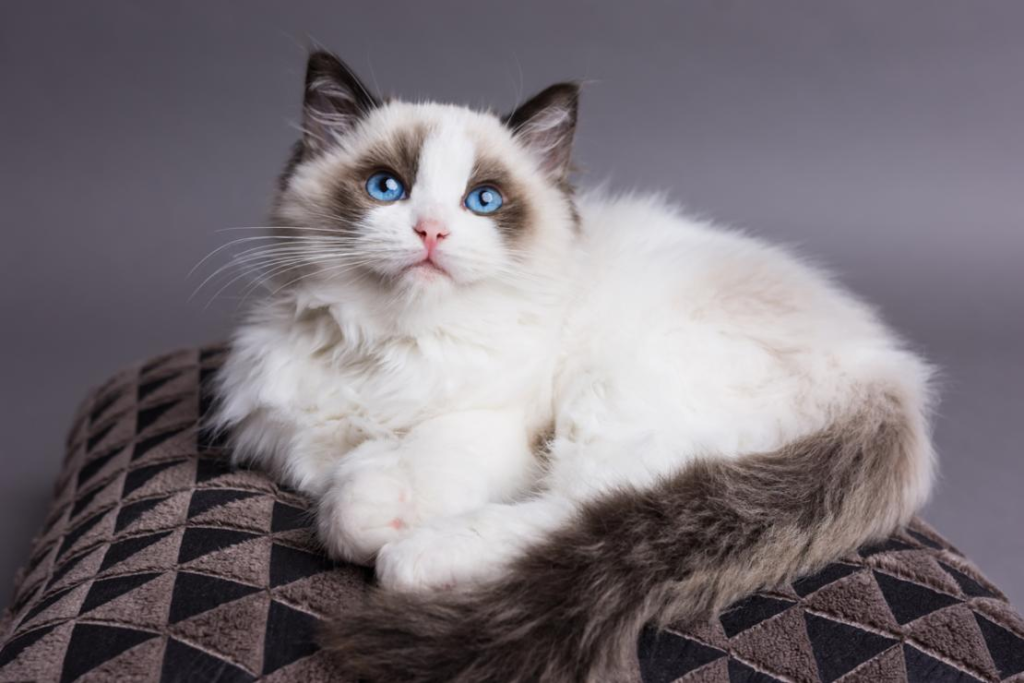
Size: 8-20 pounds
Lifespan: 12-15 years
Temperament: Docile and affectionate
The Ragdoll is a stunning breed that has blue eyes and a pointed coat. Their faces, ears, and extremities are darker than the rest of their body, despite the fact that their coats do come in a variety of hues. They are larger than other breeds and have a longer coat, giving the impression that they are much bigger. They’re rather fluffy.
These cats’ peculiar propensity to “flip” when handled while being held is how they got their moniker. These cats have further evolved this tendency via selective breeding. Nevertheless, some breeders are trying to buck this trend because they worry the cats could be a touch too gentle when handled.
They are renowned for having a laid-back and tranquil demeanor. They are quite gentle and laid back. According to certain myths, they are not immune to pain; sometimes they are just too submissive to feel it. While they are often quite loving, these cats don’t rely on humans. They don’t mind being left alone for a time, but when you arrive home, they’ll nag you for attention.
3. Manx Cat

Size: 8-12 pounds
Lifespan: 14-16 years
Temperament: Active and friendly
The Manx cat is a rare breed that spontaneously evolved on the Island of Man. One of the cats on the island was once found to have an unusual gene that caused a short tail. Due to their geographic isolation, this characteristic gradually spread to the majority of cats, resulting in the modern-day Manx breed.
These cats are available in a wide range of hues and designs. All-white Manx are rare, but not wholly unheard of. They have short hair since the longhaired version belongs to a separate breed.
As they are renowned as excellent hunters, these cats have been employed for ages to keep rodents out of grain bins and vessels. They have a reputation for being ship cats. They are also very sociable and energetic. They like their company and having fun. Despite their ferocious look and prowess in the hunt, they are reported to be extremely docile. While they are incredibly friendly with their family members, this cat might be hesitant with strangers.
4. Turkish Angora Cats
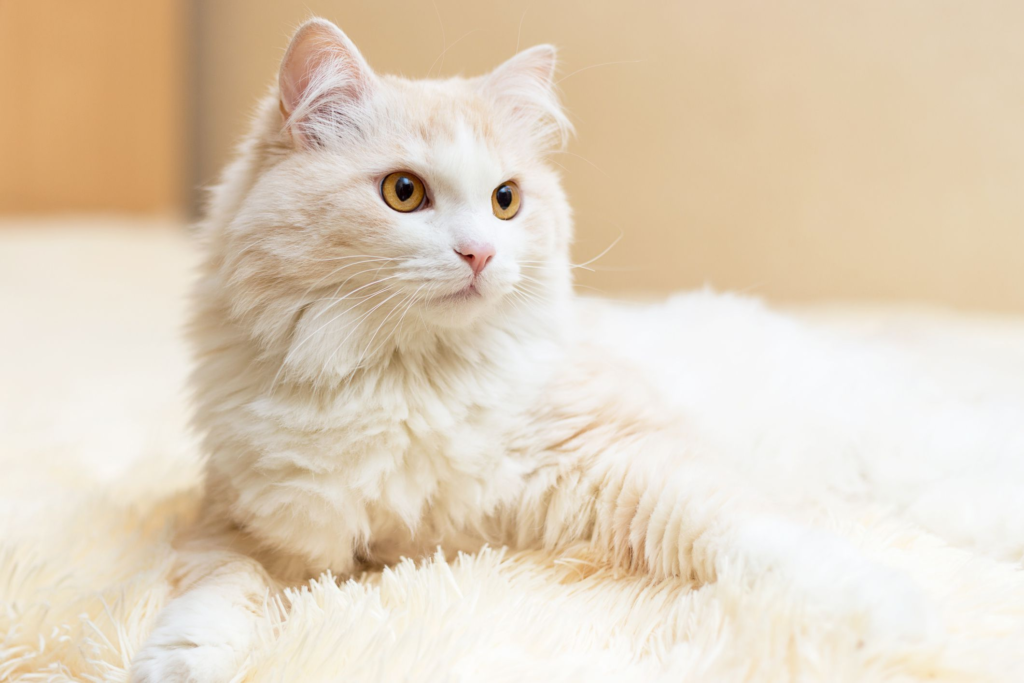
Size: 5-9 pounds
Lifespan: 12-18 years
Temperament: Intelligent and active
This cat breed was created organically, without the use of selective breeding, making it a natural breed. Its name is explained by the fact that it has its roots in the Ankara area of central Turkey. They are an ancient breed that may be far older than the 17th century when they were first described. They often have long white hair. They could have originated the mutation for solid white and long hair in the breed.
Their balanced bodies are covered in lengthy, silky coats. They fall halfway in the center, not being very slender or muscular. While being most well-known for their white coloring, they may also be seen in many other hues, like solid black, chocolate brown, and tabby patterns. They also have a wide range of eye hues, including amber, green, and blue.
These cats are clever and lively. They need some space to burn off their energy since they are rather sporty. Plan to spend money on climbing structures and toys since they need a lot of activity. These cats are rather bright and capable of solving simple problems. They are easily taught skills and rapidly adjust to being deaf.
They like climbing and have even been seen riding on the shoulders of their own people. They like a position above the action.
Deafness is associated with the white gene that also causes their blue eyes to be blue. Cats with blue eyes may be deaf on the side of the eye that is blue. Cats with two blue eyes may not have any hearing at all.
5. Maine Coon Cat

Size: 8-18 pounds
Lifespan: 13-14 years
Temperament: Independent and gentle
One of the biggest breeds of domestic cats in the world is the Maine Coon. As their name implies, they probably came from Maine. It is uncertain from what breeds they specifically descended. They most likely evolved spontaneously, however, from the cats that immigrants brought here, such as the Siberian and Norwegian Forest cats.
These cats are referred to as “gentle giants.” They are incredibly sociable despite their size and get along with just about everyone. Their strong bone structure greatly contributes to their increased size. They seem considerably larger than they actually are due to their fluffy nature.
They are simple to teach and have above-average intellect. As they are devoted to their family, they could stick close to them. They are fairly independent, however, and don’t mind going about their business while you’re not around. Until your lap is free, many will take care of themselves. They will then sneak in for some hugs.
They are good cats for kids since they are also somewhat gentle. Prepare to buy toys and climbing gear since they are highly energetic and active.
6. Bombay

Size: 8-15 pounds
Lifespan: 15-20 years
Temperament: Social and outgoing
The crossbreeding of Burmese and American Shorthair cats produced this short-haired feline. In terms of breeds, they are quite new. They were intentionally developed in 1965 to resemble little black panthers.
They behave a lot like Burmese cats and are closely related to them. They are entirely covered in black, from their faces to their soles. Or, to put it another way, they are all black. They have copper or green eyes. They have short, very smooth fur. It doesn’t need much maintenance since it is near to their body. They are of average height and have some muscle.
These felines are in remarkable health. While their food intake has to be regulated to prevent obesity, they live longer than the majority of felines.
They are courageous and extroverted. Even bigger dogs and strangers don’t frighten them. They are quite sociable and will make an effort to get anyone’s attention. For this reason, they are excellent for families with young children. They like receiving attention and don’t mind the noise that kids often bring.
They want to always have someone close and are not particularly autonomous. Cats that are older than their younger counterparts may be a little more autonomous. This breed shouldn’t be left alone for a long amount of time.
7. Sphynx

Size: 6-12 pounds
Lifespan: 8-14 years
Temperament: Outgoing and active
The Sphynx is perhaps the most people-focused cat out of all the cuddly ones in existence. They are notorious for “talking” to their humans while following them about the home. They are also well recognized for having nearly minimal fur. This came about as a consequence of a genetic mutation that was selected for by selective breeding in the 1960s. Their skin resembles leather in texture. Depending on their precise genetics, they can have a little quantity of hair or be entirely bald.
There may be whiskers, or they may be nonexistent or less than typical. The marks on their fur would normally be on their skin. They produce greater body heat since they don’t have hair. They feel warmer to the touch as a result, yet they could need some assistance to survive in colder areas.
These cats are really outgoing. They like interaction and spotlights. Almost everyone will be the target of their attention-seeking behavior, which frequently includes loud speaking. They are a breed with a lot of energy, therefore they need a lot of space to run about in and a lot of fun. They are intelligent and simple to teach, much like a dog.
8. Burmese

Size: 6-14 pounds
Lifespan: 16-18 years
Temperament: People-oriented and playful
The Thai-Burma border region is where the Burmese people originally came from. They were produced around 1930 as a consequence of selective breeding. The ancestor of all the cats is a single cat named Wong Mau, which was brought to America and crossed with a Siamese. Due to their mostly independent development, the British and American Burmese cats are considerably distinct from one another.
These kitties were merely dark brown at first. Now, nevertheless, they have been improved to accommodate many hues. However there are substantial differences in how these other hues are formally recognized.
These cats have a strong social instincts. They are highly lively and retain their kitten-like characteristics far into maturity. They develop close bonds with their owners and seek out the center of the home’s activities. For cats, they are quite sociable. They adore fetch games and can pick up certain tricks quite easily. Because of these actions, they are often referred to as “dog-like”.
If you adopt this breed, be ready for some noise since they are quite noisy. Also, they should not be left alone for a lengthy amount of time.
9. American Curl
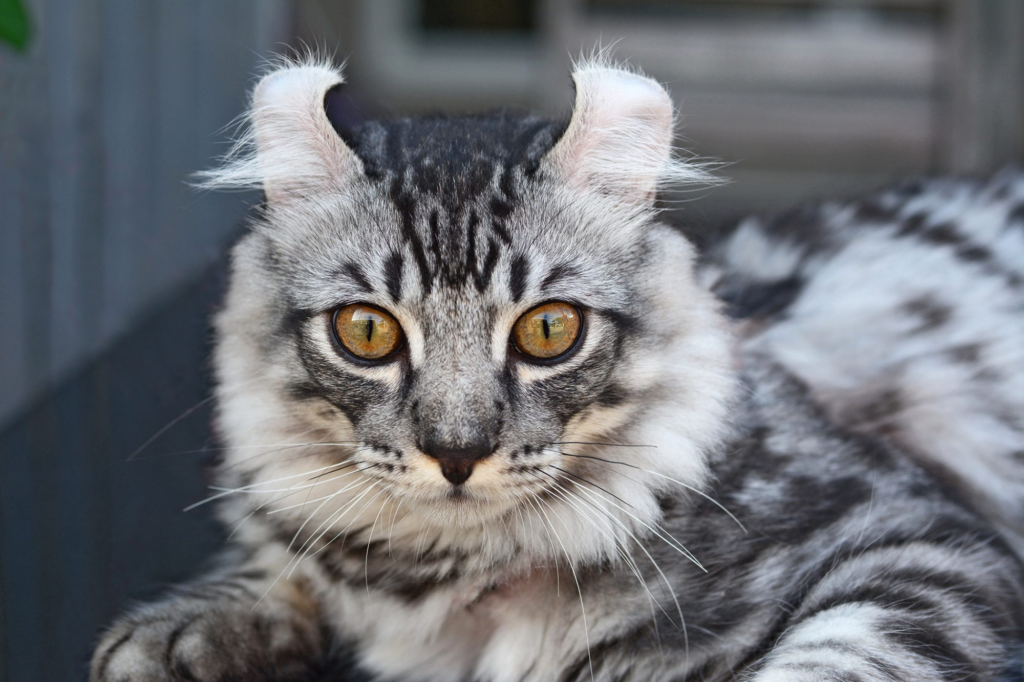
Size: 5-10 pounds
Lifespan: 9-13 years
Temperament: Adaptable and affectionate
A unique cat is the American Curl. Due to a hereditary disease that damages the cartilage in their ears, they have crinkled ears. In 1981, the first stray cats of this species were found. The kittens born to these cats later had ears that were similarly curled. The founding parents of the breed were these stray animals.
The American Curl’s kittens are born with healthy ears. Yet after just a few days, they begin to curl. While it’s uncommon, some American Curls have ears that aren’t curled. As the gene for the curled ear feature is dominant, only one parent needs to have it for most kittens to inherit it.
These cats are typically in fair health, which is especially noteworthy given their vast gene pool. Yet, since they are prone to handling, their ears need to be handled gently. Ear infections may also be more common in them.
These cats are kind and devoted to their owners. Similar to dogs, they develop deep bonds with their owners. Their degree of exercise is modest. Kids will require some playing, but they can also relax for most of the day. These cats are not easily agitated and can rapidly adjust to new situations.
10. Birman
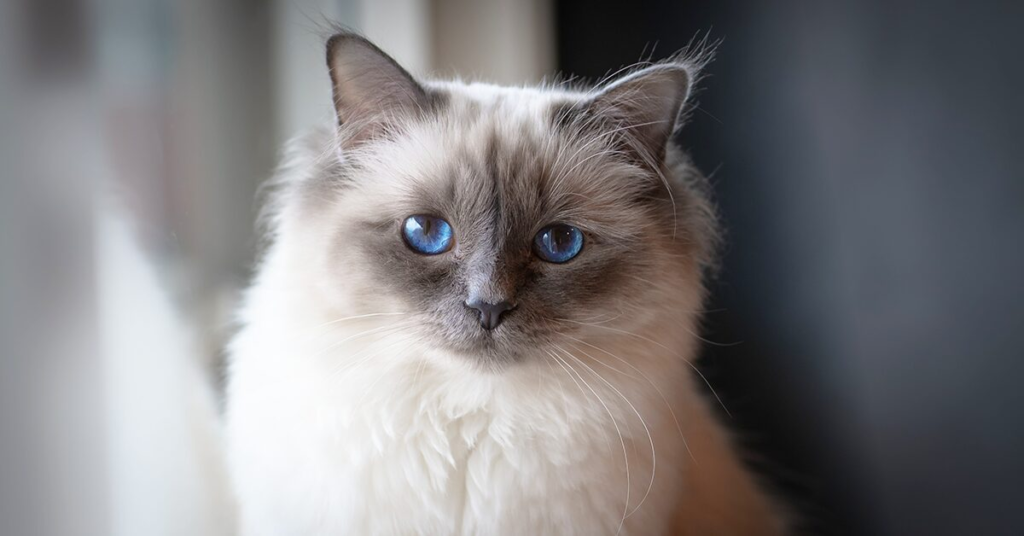
Size: 10-12 pounds
Lifespan: 13-15 years
Temperament: Docile and quiet
The Birman, as their name suggests, are from Burma. They have color-pointed coats and lengthy hair. Their fur is very silky, and their eyes are usually a deep blue color. They sometimes have gloves on their paws, which sets them apart from other point breeds. Unknown is the origin of this breed. They did, however, come from Burma.
Birmans are renowned for being a caring breed. They make terrific feline friends. They don’t seem very active. They are rather gentle and often spend the day lying about. Although they have a voice, their meows are subdued and unobtrusive. Due to their preference for a calm and quiet environment, they don’t always get along well with kids. They can, however, function effectively with older kids.
While these cats are focused on people, they are not totally as reliant on humans as other felines are. Throughout the day, they are normally okay being left alone, but when you return home, they will be demanding your attention.
11. Chartreux

Size: 7-12 pounds
Lifespan: 13-15 years
Temperament: Quiet, loyal, and intelligent
While being recognized by registries all over the globe, this unusual breed originated in France. Short cats have thinner bones, they are. They are renowned for having quick reactions and a squat physique. These cats are only available in “blue” hues. Although having shorter hair, they have a waterproof, thick double coat that gives them a fluffy appearance.
Farmers admire these cats because of their capacity for hunting. Most of the time, they don’t even utter a sound since they are such silent cats. Kids are intelligent and capable of teaching themselves numerous skills. These felines have a reputation for utilizing doorknobs, unlocking window locks, and turning on and off gadgets.
Even as adults, they are still lively and still exhibit many kitten-like traits. They get along with most people and are not aggressive. They often connect strongly with a single owner and don’t pay attention to anybody else, making them a one-person cat. For this reason, they may not be appropriate for families.
5 Questions & Answers:
What are some cat breeds that are known to act like dogs?
Breeds like the Ragdoll, Maine Coon, Siamese, Abyssinian, and Burmese are often recognized for their dog-like behaviors, such as their affectionate nature and willingness to engage with their human companions.
What characteristics make these cat breeds resemble dogs?
These cat breeds are sociable, affectionate, and tend to form strong bonds with their owners. They may follow their owners around, enjoy being held, and actively seek attention and interaction.
Can these cat breeds be trained like dogs?
While cats are generally less trainable than dogs, some of these breeds are more responsive to training than others. They can learn tricks, respond to commands, and even use litter boxes more reliably than other cat breeds.
Do these cat breeds require more attention and interaction than other cats?
Yes, these breeds typically thrive on attention and interaction. They may become unhappy or anxious if left alone for extended periods, so they benefit from playtime, companionship, and mental stimulation.
Are there any downsides to having a cat breed that acts like a dog?
While these breeds can be delightful companions, their need for attention and interaction might be demanding for some owners. Additionally, they may be more vocal or active, so potential owners should be prepared for their specific needs and behaviors.

